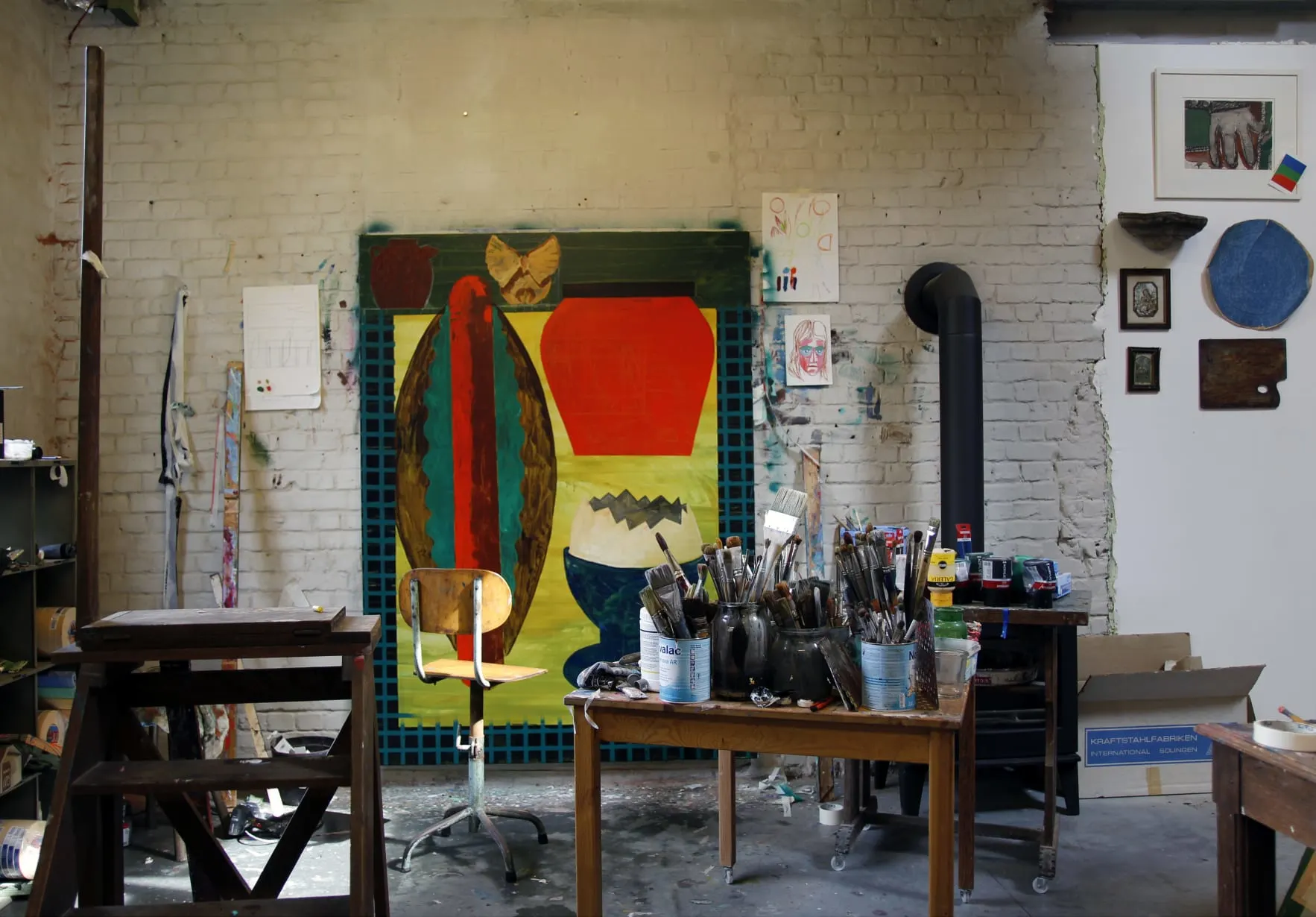Kristof Santy does not consider himself to be a storyteller. Instead, he lets his artworks take the lead as he becomes submissive to the subject itself. He is inspired by his immediate surroundings, creating colourful and vibrant images that remain familiar. When Santy was young, he became fascinated by drawing, but could not pursue a career in art and went on to work in a factory instead. While employed as a factory worker, he would constantly daydream about painting. During the first years of his practice, Santy searched for a distinctive visual language to express himself and began to explore different styles and subjects. He began by creating a series of family portraits and self-portraits, while also making studies of people working in technical environments
Particularly influenced by what has come before him, Santy’s studio is piled high with artbooks on celebrated painters and 19th century unknown artists. The specific discovery of works by Philip Guston and Jean Brusselmans had a profound influence on Santy’s own work as he began to find enormous freedom in the expressive painting of typically mundane and everyday subjects. Subsequently, Santy discovered his own individual way of painting, producing his first figurative works and still lives. The artist states, “I love to say that I invent nothing, I just rediscover”.
Santy collects all sorts of folk art that fills his eclectic house and studio that has become a cabinet of curiosities. Similar to his house, his large-scale paintings have become an ode to a visual tradition that has fallen into oblivion. Thematically ranging from classical portraiture to kaleidoscopic abstract compositions, Santy’s artistic practice covers a multitude of enigmatic imagery often populated by interiors, still lives, landscapes, gastronomy and folklore tales. Rendered in bright and vivid palettes, his works possess a joyous and playful quality.
“It is the seeming simplicity and universality of Santy’s paintings that undoubtedly makes them so appealing. They present images of a world similar to our own but where the portions are bigger, the objects larger-than- life, and the colour saturation dialled up to eleven. Yet, these are complex works which continue to evolve under close inspection. Santy presents for the viewer the history of their making with an unguarded honesty, simultaneously offering up a smorgasbord of colour, pattern and visual motifs.”
– Helen Hillyard, Assistant Curator at Dulwich Picture Gallery







